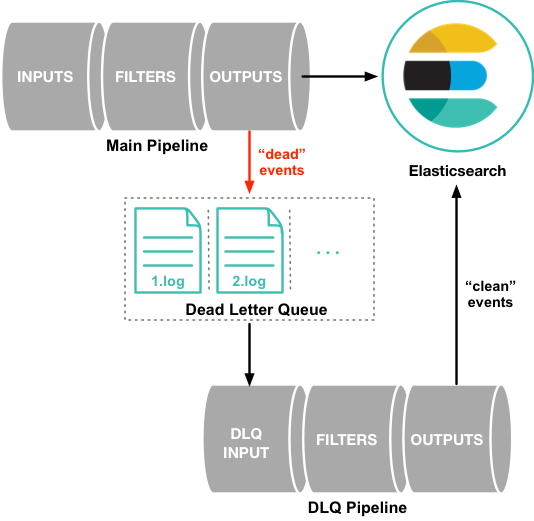

It stores messages that have expired or that have failed transfer or delivery. Specifying Use of the Dead-Letter QueueĪ dead-letter queue is in the queue manager of the sending application.
#Service bus dead letter queue windows
On Windows Vista, WCF provides a dead-letter queue for each queued client application. On Windows Server 2003 and Windows XP, Windows Communication Foundation (WCF) provides a system-wide dead-letter queue for all queued client applications. The custom dead-letter queue provides isolation between clients that share the same MSMQ service to send messages. Therefore, in WCF NetMsmqBinding, MsmqIntegrationBinding, and MSMQ on Windows Vista provide a custom dead-letter queue (sometimes referred to as an application-specific dead-letter queue). A shared dead-letter queue also requires clients to browse through the queue to find a message that they sent, which can be prohibitively expensive based on the number of messages in the dead-letter queue. In several cases (security, for example), you may not want one client to read another client's messages from a dead-letter queue. If two clients are sending messages to two different services, and therefore different queues in WCF are sharing the same MSMQ service to send, then it is possible to have a mix of messages in the system dead-letter queue. Message Queuing (MSMQ) provides two system-wide dead-letter queues: a transactional system-wide dead-letter queue that stores messages that failed delivery to the transactional queue and a non-transactional system-wide dead-letter queue that stores messages that failed delivery to the non-transactional queue. Most queuing systems have a system-wide dead-letter queue where all failed messages from that system are stored.

If delivery failed because the target queue quota was reached, you can reattempt delivery in the hope that the quota problem was resolved. For example, in the case of authentication failure, you can correct the certificate attached with the message and resend the message. The compensation logic depends on the cause of the failure. Generally, applications write compensation logic to read messages from the dead-letter queue and failure reasons. Messages can also be put in a dead-letter queue for other reasons, such as exceeding a queue quota or because of authentication failure. Expired messages are sent to a special queue called the dead-letter queue. Time-sensitive messages have a Time to Live (TTL) property set in the queued binding, which indicates how long the messages can be in the queue before they must expire. This behavior may not be appropriate for time-sensitive messages. Queued messages can remain in the queue for a long time if the receiving application does not read them from the queue in a timely fashion.
#Service bus dead letter queue full
The failed delivery can be caused by reasons such as network failures, a deleted queue, a full queue, authentication failure, or a failure to deliver on time. These failed messages are recorded in a dead-letter queue.


 0 kommentar(er)
0 kommentar(er)
